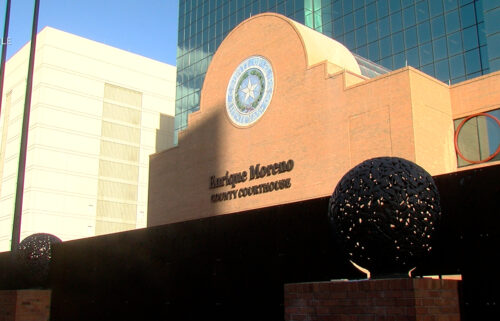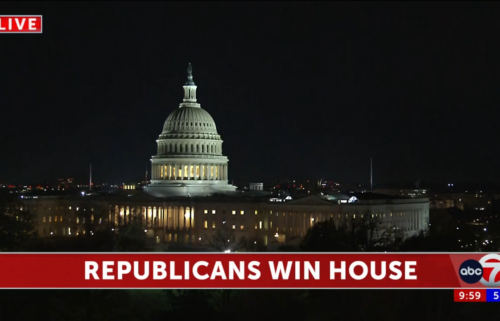How uneven economic growth feeds political turmoil

When it comes to economic innovation, the rich are getting richer — and that’s generating increasing social frustration and political turmoil for the winners and losers alike as the digital revolution rolls through the American economy.
Over the past 15 years, employment in the computer- and science-based industries at the forward edge of economic change has further concentrated into a handful of superstar cities, according to a sweeping new study released Monday by the Brookings Institution’s Metropolitan Policy Program and the Information Technology & Innovation Foundation. Just 20 large metropolitan areas now account for a clear majority of the nation’s jobs in the 13 high-productivity industries that the authors identify as the nation’s most innovative.
This narrowing distribution of America’s most cutting edge, research-intensive industries — including pharmaceuticals, software, aerospace, data processing, and computer and communications manufacturing — has contributed to the concern in many smaller communities about being left behind in the changing economy. That anxiety has widened the audience for President Donald Trump’s racially-infused message of economic nationalism.
But simultaneously, the lopsided distribution of these new jobs has ignited a backlash over affordability, displacement of low-income families and traffic congestion even in many of the communities, like San Francisco and Seattle, on the winning side of the equation. Despite the enormous creation of wealth and jobs in the Bay Area over the past three decades, it is common to hear mayors and community leaders in emerging technology hubs declare that their greatest fear is becoming “another San Francisco.”
“Nobody feels that they are winning,” says study co-author Mark Muro, policy director of the Metropolitan Policy Program. “Everyone seems to feel there is either too much or too little (development). Our story is fairly sobering about the ways every category of community is being hurt by this economic order that is bigger than all of them.”
Roles reversed
The report underscores the historic reversal of roles between the Democratic and Republican parties that has accelerated during Trump’s polarizing presidency. In imagery that still shapes each party’s political message, Democrats have long considered themselves the party of voters left behind in the economy, while Republicans usually portray themselves as the champions of the winners — the “makers” rather than the “takers,” as former GOP House Speaker Paul Ryan was fond of saying.
But the winners in the digital economy are collected overwhelmingly in large metropolitan areas that are moving steadily toward the Democrats, largely around cultural and social issues from race relations and immigration to guns, gay rights and the role of women in society. Republicans have consolidated a dominant position in the places that feel most excluded and threatened not only by those cultural and social shifts, but also by the economic changes driving the transformation to an information-based economy.
Correlating the study’s findings with the results of the 2016 presidential election captures the enormity of that shift. In the 5% of metropolitan areas that have attracted the largest number of these cutting edge jobs — a list of 20 communities that includes New York, Boston, Washington, Atlanta, Dallas, Phoenix, San Francisco, Los Angeles, San Diego and Seattle — Hillary Clinton won 59% of the vote and routed Trump by 11.5 million ballots, according to calculations provided by Brookings. Just those 20 thriving metropolitan areas provided her over 28 million votes — more than two-fifths of her total.
In the next 5% of metro areas that have attracted the most of these high-innovation jobs — a group that includes Pittsburgh, Orlando, Charlotte, Nashville, Austin and Portland — Clinton beat Trump by about eight percentage points, or roughly 1.2 million votes. In all, these two groups of thriving urban areas — the 40 communities that comprise the 10 percent of American metros that have generated the most of these highly-innovative jobs — provided Clinton over 36 million votes, fully 55% of her total.
In the metros that ranked between the 10th and 25th percentile for the number of these high-innovation jobs, Trump squeezed out a narrower advantage of about 200,000 votes, or half a percentage point. He beat Clinton soundly by 3.4 million votes in the remaining 75% of metro areas with the smallest numbers of these coveted jobs. Trump also won comfortably in the smaller communities that are not included in the nation’s roughly 400 metropolitan areas.
Democrats stronger in economically growing areas
These stark findings reinforce the results of other studies over the past few years that show Democrats growing stronger in the places generating the most economic growth and Republicans solidifying their hold on the places displaying less dynamism. Brookings had found that although Clinton won fewer than a sixth of the nation’s counties in 2016, her counties generate almost two-thirds of the nation’s GDP.
Another recent Brookings study found that the average Congressional district held by Democrats now generates 50% more economic output than the typical district held by Republicans. Productivity per worker and the median income is now also substantially higher in the Democratic than the Republican districts. A separate CNN analysis found that Democrats now control three-fourths of all House seats with more college graduates than the national average, up from less than three-fifths before the 2018 election.
The 13 industries Monday’s report labels as high-innovation provide just 3% of the nation’s jobs. But they account for 6% of the nation’s total economic output, a quarter of its exports and a striking two-thirds of its business research spending. Their high wages and extensive supply chains generate big “multiplier” effects that catalyze other economic activity in their area, which is why they are such a focus of municipal economic development efforts.
As the Brookings/ITIF report notes, the separation of the superstar cities from the rest of the economy defies economic theory, which assumes that, like water finding its level, lower labor and housing costs will encourage more jobs to shift out of the most expensive urban centers toward less expensive places.
Rich cities are pulling away
The differences in output and wages between high- and low-income US regions did in fact generally narrow from the 1940s to the 1980s, the authors note. But since the 1980s, the richest metropolitan areas have pulled further away from the rest, with the gap significantly widening over the past 15 years, exactly as the digital economy has accelerated.
Just five metropolitan areas — San Francisco, San Jose, Seattle, San Diego and Boston — accounted for 90% of all the net new job growth in these dynamic industries since 2005, the study found. The 20 largest metros now command a much bigger share of jobs in these advanced industries than they do in employment overall.
Muro says this concentration reflects a fundamental shift in the ingredients of economic success. When the economy revolved around commodities like agricultural output and industrial production, “all kinds of things contributed to local economic viability, whether it was rivers or interstate highways or appropriate growing climate, or ports,” he notes. But for companies operating in the knowledge economy, he says, one factor above all drives decisions on where to locate: the availability of large pools of well-educated talent. That is pushing them to concentrate their employment in fewer places, despite soaring housing costs and intense wage competition for new workers. The Amazon decision to locate its “second headquarters” in northern Virginia even after a nationwide search underscores those calculations.
The hope of many urban affairs experts has been that oppressive housing costs will encourage talented workers — and the companies pursuing them — to relocate to mid-sized and smaller cities where the cost of living is much lower. There’s some evidence of that occurring, but overall the convergence of more college graduates into fewer places is one of the study’s most striking findings. Nearly 40% of working-age adults in the 5% of metros with the most high-innovation jobs have at least a four-year college degree, the researchers found. That number steadily declines to 35% in the next 5% of metros, 32% in the 15% beyond that and just 26% in the remaining 75%.
The trend toward the concentration of the most highly-trained talent now appears self-reinforcing. College educated migrants, both from other places in the US and internationally, tend to locate in the places that already have the most college graduates, the researchers found.
This divergence is ominous, Muro says, because of the evidence that the presence of large numbers of highly skilled workers Is the critical variable in where these innovative industries grow. That means, as smaller places lose more of their college graduates to the superstar cities thriving in the new economy, they become even less attractive to innovative companies, even if their cost of living is lower. This cycle fuels the modern political divide, too, as Democrats improve their standing in prospering metro areas with large numbers of college graduates and the Trump-era GOP grows stronger in non-metro areas dominated by white voters without a college degree.
The paradox is that the migration of college-graduates into fewer places is generating frustration on the receiving end, too. The willingness of well-educated, well-paid young people to live in central cities has helped to revive cities from Pittsburgh to Chicago to Los Angeles. But the influx has also ignited concerns about affordability, displacement and gentrification. Virtually without exception, every city booming in the new economy faces frustration over the fact that while they are importing large numbers of college graduates, they have not proven capable of providing their own largely minority kids from low-income communities with the skills to compete for the jobs they are creating.
A government solution?
Development is creating so many pressures in the superstar cities that the authors expect most of the future growth in employment in these industries will shift to tech hubs overseas. “More and more the incremental growth will go offshore,” says Robert Atkinson, president of the ITIF and also a co-author of the study. “Just simply for the fact that these (domestic) places are packed to the gills.”
Given that prospect — and the strains this concentration is imposing on both the domestic winners and losers — Brookings and the ITIF are calling for a significant federal effort to encourage greater dispersal of these dynamic industries across mid-sized US cities. They propose that the federal government should pick 10 mid-sized communities and then invest a whopping $10 billion in each of them over a 10-year period — mostly through a huge increase in federal research grants for local universities — to create new “regional growth centers” across the heartland. “You just needed a big push to get places over the hump,” Atkinson says.
One of the key political challenges for such a plan is that congressional Republicans have displayed little interest in promoting urban development because they have been almost completely squeezed out from not only the largest metro areas, but many of the mid-sized communities as well. Trump through his presidency has shown much less concern about courting the big-city voters who resisted him in 2016 than in trying to mobilize his non-urban base by painting places such as Chicago, Los Angeles and San Francisco as dangerous and dysfunctional.
But, as Muro notes, that hostility to cities among Trump’s core supporters is counterproductive because their economic fate is bound to the urban centers. “It’s all about the regional spillovers of these big metro areas,” he said. “They become anchors of regional mobility and regional prosperity. There is all kind of research that the economy of adjacent…rural places are hugely tied to the vibrancy of the urban center.”
That’s a vision of shared interest across the red-blue divide almost completely absent from today’s political debate. A regional economic policy that created a model for building bridges across that widening partisan trench might be the greatest innovation of all.




